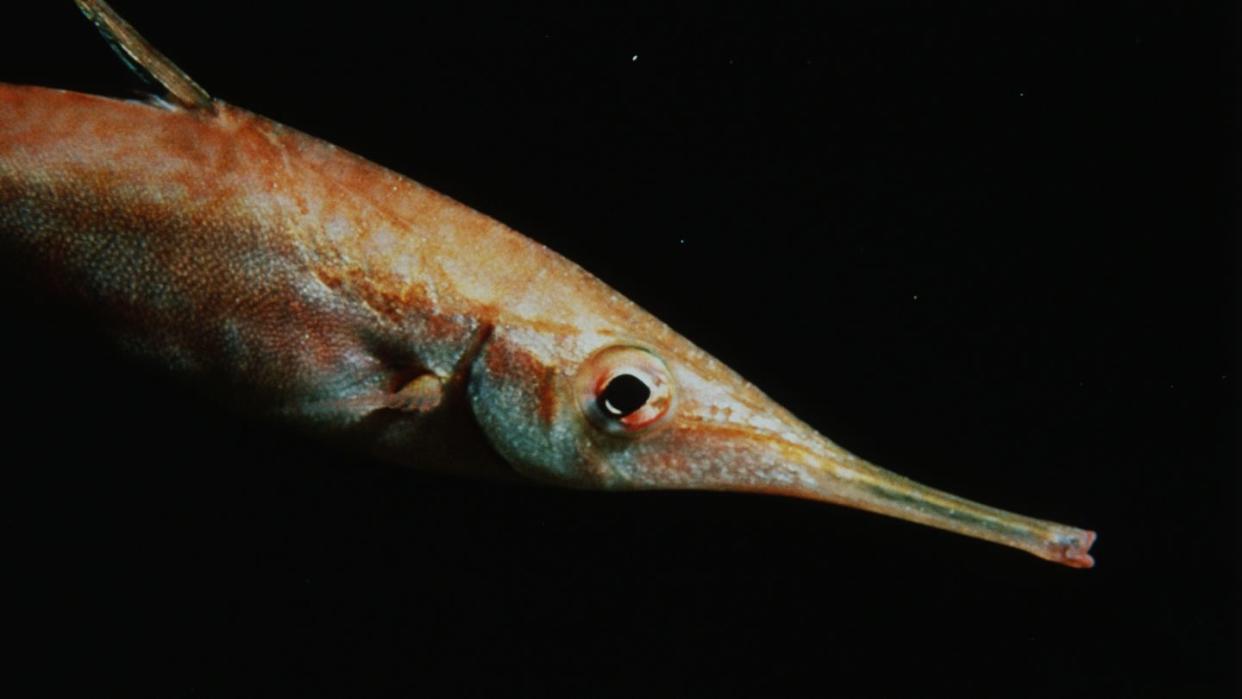A New Discovery Reveals Why Darwin’s ‘Living Fossil’ Keeps Defying Evolution

Gars, a group of seven fish, took on the “living fossils” moniker due to incredibly sparse changes over tens of millions of years of existence.
The gars of today are hardly any different from the same species in the fossil record over 100 million years ago.
A study shows that the species’ ability to fix itself on the move proves vital.
Gars hardly change. Ever. These ray-finned fish swimming about today are minimally different from the same species in the fossil record over the course of 100 million years ago. That’s enough stability that Charles Darwin dubbed them “living fossils” in 1859.
Now we know what made that possible.
A study published in Evolution by a team of Yale University researchers shows that gars have the slowest rate of molecular evolution among all jawed vertebrates. They just... hardly change, and this slow evolutionary creep makes the living fossils altogether more fascinating.
The low evolutionary rate also leads to a dearth of species hybridization. “We show that gars’ slow rate of molecular evolution has stymied their rate of speciation,” Thomas Near, professor of Ecology and Evolutionary Biology in Yale’s Faculty of Arts and Sciences and the paper’s senior author, said in a statement. “Fundamentally, this is the first instance where science is showing that a lineage, through an intrinsic aspect of its biology, fits the criteria of living fossils.”
Where things get especially interesting is in the “why” of it all. The Yale team believes that gars have a DNA repair ability stronger than the norm, which allows them to correct somatic and germline mutations—the alterations to DNA that occur before and after conception—on the fly.
The seven species alive today all remain largely unchanged for over 100 million years. And that just may be because they’re quicker than we think. The historically slow ability to evolve may come from the species’ knack to quickly repair themselves while on the move.
The research team wants to know more about this self-repairing mechanism, hoping to eventually translate this ability from gars to humans. “Most cancers are somatic mutations that represent failures of an individual’s DNA repair mechanisms,” Near said. “If further study proves that gar DNA repair mechanisms are extremely efficient, and discovers what makes them so, we could start thinking about potential applications to human health.”
The methodical mutations of the gars from generation to generation is truly impressive. The team researched 481 jawed vertebrate species, and concluded that gars’ DNA consistently evolves up to three orders of magnitude more slowly than any other major group. The research also highlighted slow rates among sturgeon and paddlefish—other examples of living fossils that haven’t enjoyed quite the same level of research as gars.
This slow evolution may limit the ability of gars to create new species, but it allows the fish to have a much older common ancestor and still produce viable hybrid offspring. “The slower a species’ genome is mutating, the more likely it is that it will be able to interbreed with a separate species that it’s been genetically isolated from over a long stretch of time,” Chase Brownstein—a graduate student in Yale’s Department of Ecology and Evolutionary Biology and the study’s co-lead author—said in a statement.
That means the Alligator Gar and Longnose Gar—two distinct gar species in the Brazos and Trinity river systems in Texas, which both share a common ancestor from before the days of the Tyrannosaurus rex—are still making viable and fertile hybrids (not new species). They represent the oldest identified parental split among all animals, plants, and fungi.
Brownstein told IFLScience that these gars producing viable and fertile hybrids in the wild is equivalent to a chimpanzee producing fertile offspring with a kangaroo, a whale with a wombat, or an ostrich with a blackbird. “Absolutely nutty,” he said.
“Our paper shows that living fossils aren’t simply strange accidents of history but provide a fundamental demonstration of the evolutionary process in nature,” Brownstein said in a statement. “It shows that analyzing patterns in living fossils’ evolutionary history might have implications for our own story. It not only helps us better understand the planet’s biodiversity, but potentially could one day be applied to medical research and improve human health.”
You Might Also Like

